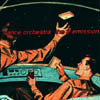 Vance Orchestra releases are hard to find, spread over obscure and very small lables, beautiful designed and highly original. The orchestra are in fact a duo of Dutch musicians, who record a kind of deep listening music one can search for an eternity without a clue where to begin. This is the first full-length album I could get hold of. Packed in a fold-out miniature album sleeve (with an additional booklet full of illustrations and details), the CD clocks in at over 70 minutes with only six tracks. All of the pieces share a similar sound development and compositional evolution, mainly produced by electronics but with some added vocal snippets and bass lines. As the artwork and the titles suggest, the songs are soundtracks for time and space travel or a fictious mission in an alternative reality. Vance Orchestra are aural landscape shapers in a league of their own, only vaguely comparable to Zoviet France. The mood setting is mainly calm and atmospheric, with the exception of "Trying To Stop The Pain," which has a disturbing quality that seems to go on for too long. When everything's shut down late at night or in the early morning hours, whenever a concentrated listening is possible, 'The E Emission' is most mind-altering. Waves of memories and impressions pass on by, making it quite easy to get lost in thoughts while this music permanently feeds the subconscious. There is a love for details and a constructive force behind the music which makes this CDR both a pleasure and a timeless treasure.
Vance Orchestra releases are hard to find, spread over obscure and very small lables, beautiful designed and highly original. The orchestra are in fact a duo of Dutch musicians, who record a kind of deep listening music one can search for an eternity without a clue where to begin. This is the first full-length album I could get hold of. Packed in a fold-out miniature album sleeve (with an additional booklet full of illustrations and details), the CD clocks in at over 70 minutes with only six tracks. All of the pieces share a similar sound development and compositional evolution, mainly produced by electronics but with some added vocal snippets and bass lines. As the artwork and the titles suggest, the songs are soundtracks for time and space travel or a fictious mission in an alternative reality. Vance Orchestra are aural landscape shapers in a league of their own, only vaguely comparable to Zoviet France. The mood setting is mainly calm and atmospheric, with the exception of "Trying To Stop The Pain," which has a disturbing quality that seems to go on for too long. When everything's shut down late at night or in the early morning hours, whenever a concentrated listening is possible, 'The E Emission' is most mind-altering. Waves of memories and impressions pass on by, making it quite easy to get lost in thoughts while this music permanently feeds the subconscious. There is a love for details and a constructive force behind the music which makes this CDR both a pleasure and a timeless treasure.
samples:


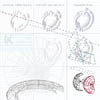 Here is a beautiful work by two artists who have different approaches to working with sound, but collaborate well. David Myers works with feedback-based sounds through various devices he has built, including a "feedback machine" I've seen him wear during live performances. (Suspended in front of his belly from a strap around his neck, he looked much like a cigarette girl from the 1930s.) Asmus Tietchens is not known to perform live, unless he's simply playing a recording of something composed in the studio. It seems his style is to take a sonic idea or source material, and go into the studio and work it for the length of an album (or double album). So you can pick up most any Tietchens CD or record, and hear a similarity between the pieces as he explores the many possibilities of his initial concept.
Here is a beautiful work by two artists who have different approaches to working with sound, but collaborate well. David Myers works with feedback-based sounds through various devices he has built, including a "feedback machine" I've seen him wear during live performances. (Suspended in front of his belly from a strap around his neck, he looked much like a cigarette girl from the 1930s.) Asmus Tietchens is not known to perform live, unless he's simply playing a recording of something composed in the studio. It seems his style is to take a sonic idea or source material, and go into the studio and work it for the length of an album (or double album). So you can pick up most any Tietchens CD or record, and hear a similarity between the pieces as he explores the many possibilities of his initial concept. According to
According to 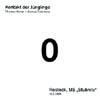 Recorded inside of a ship in Germany in 2001, this 42-minute piece is sometimes very quiet, with bursts of static and sounds like gurgling water. Elsewhere it has many layers of distinct sounds from drones to gently crackling static. There's a nice range from low to high frequencies and from droning to beeping/chirping sounds, with the overall feeling of something building in intensity, gently subsiding, then regaining strength in several waves. I knew nothing of Thomas Köner before hearing these two Kontakt der Jünglinge CDs, so by checking his web site (http://www.koener.de) I was not surprised to learn he started as a composer for film. From what I know of Asmus Tietchens, he does not often perform live, as he's primarily a studio-based composer. I would have been curious to learn what equipment he used in this performance, if any. Or did he just play prerecorded bits?
Recorded inside of a ship in Germany in 2001, this 42-minute piece is sometimes very quiet, with bursts of static and sounds like gurgling water. Elsewhere it has many layers of distinct sounds from drones to gently crackling static. There's a nice range from low to high frequencies and from droning to beeping/chirping sounds, with the overall feeling of something building in intensity, gently subsiding, then regaining strength in several waves. I knew nothing of Thomas Köner before hearing these two Kontakt der Jünglinge CDs, so by checking his web site (http://www.koener.de) I was not surprised to learn he started as a composer for film. From what I know of Asmus Tietchens, he does not often perform live, as he's primarily a studio-based composer. I would have been curious to learn what equipment he used in this performance, if any. Or did he just play prerecorded bits? 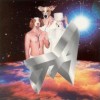 I don't know about you, but my first thought when listening to the new Trans Am opus "TA" was not "Hey, this song really could use the remix treatment!" Sadly, that is what has transpired on this, a brief EP of reconstructions of three tracks from that album. The personnel involved are interestingly enough: John Herndon, here as A Grape Dope; Dan the Automator, he of Gorillaz, Deltron 3030 and Lovage fame; underground hip-hop flavorists Prefuse 73 and Dabrye; and Trans Am's own recording engineer Jonathan Kreinik contributing a remix of his own. Really, though, there is no improvement for these songs.
I don't know about you, but my first thought when listening to the new Trans Am opus "TA" was not "Hey, this song really could use the remix treatment!" Sadly, that is what has transpired on this, a brief EP of reconstructions of three tracks from that album. The personnel involved are interestingly enough: John Herndon, here as A Grape Dope; Dan the Automator, he of Gorillaz, Deltron 3030 and Lovage fame; underground hip-hop flavorists Prefuse 73 and Dabrye; and Trans Am's own recording engineer Jonathan Kreinik contributing a remix of his own. Really, though, there is no improvement for these songs. Girl Power gets knocked back back a few steps with Blechdom's latest EP release on TB6. The horrible vocals, detuned music and equally painful subject matter have undoubtedly plunged Miss Kevin's career into unbelievable new lows. The strange thing is that it's all intentional and I love it. While I make no psychological claims, I'm guessing she has probably struggled with but accepted the fact that she will never be an angry (but cute), mousey girl with an acoustic guitar, an anorexic sex kitten, nor a post-punk lipstick lesbian-on-the-four-year-plan fronting a rock quartet who chooses to spell girl with two r's and no i. Her chosen career path is faced with critical obstacles only tightwads like NPR reporters would discuss in depth. First and foremost, she's an entertainer, and until you accept her as such, you're setting yourself up to be soured by the sound. Consider that she's also immersed in a scene dominated by very, very serious men who wear two or three names like they think they're some composer or something. This short but sassy disc compliments her recent live shows with a souvenir of said entertainment. Listening, I recall the fond memories of when I first asked myself, "did she just say 'my pussy getting wetter'," or slipped her some cash during a super-classy rendition of that 1980s hit "Private Dancer," once popularized by Tina Turner (I love that imitation harmonica sound solo). Love it or hate it, it's impossible to take your eyes off of it when it's right in front of you. That, my friends is power. At under 15 minutes, the entertainment is short and sweet and without any fart humor the critics have accused her of playing up in the past. What else are you going to spend your $8 on? Two beers and a bag of chips?
Girl Power gets knocked back back a few steps with Blechdom's latest EP release on TB6. The horrible vocals, detuned music and equally painful subject matter have undoubtedly plunged Miss Kevin's career into unbelievable new lows. The strange thing is that it's all intentional and I love it. While I make no psychological claims, I'm guessing she has probably struggled with but accepted the fact that she will never be an angry (but cute), mousey girl with an acoustic guitar, an anorexic sex kitten, nor a post-punk lipstick lesbian-on-the-four-year-plan fronting a rock quartet who chooses to spell girl with two r's and no i. Her chosen career path is faced with critical obstacles only tightwads like NPR reporters would discuss in depth. First and foremost, she's an entertainer, and until you accept her as such, you're setting yourself up to be soured by the sound. Consider that she's also immersed in a scene dominated by very, very serious men who wear two or three names like they think they're some composer or something. This short but sassy disc compliments her recent live shows with a souvenir of said entertainment. Listening, I recall the fond memories of when I first asked myself, "did she just say 'my pussy getting wetter'," or slipped her some cash during a super-classy rendition of that 1980s hit "Private Dancer," once popularized by Tina Turner (I love that imitation harmonica sound solo). Love it or hate it, it's impossible to take your eyes off of it when it's right in front of you. That, my friends is power. At under 15 minutes, the entertainment is short and sweet and without any fart humor the critics have accused her of playing up in the past. What else are you going to spend your $8 on? Two beers and a bag of chips? 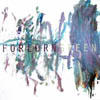 ET is hip again. I'm not really sure why but I'm assuming that it's just being rediscovered yet again by a new generation of creative musicians. But since Extended Technique is in fact old hat I find it hard to get interested in ET per se. Take the woodwind for instance — what's the point, after Bartolozzi, Zorn and the rest have done it all? While ET used to make me think, "Gosh, that's very strange way to play an xyz, how interesting and novel," now I don't. I got over it. It's not that I don't approve of ET. I do. I approve of any effectively deployed technique. But a musicians over-valuation of ET's intrinsic value can be tiresome. Perhaps we all go through that phase, musicians included, so let's charitably ascribe any ET excesses to a passing phase. Meanwhile, Subotnick and Stockhausen, among others, have shown that a tape machine or record player is as much a musical instrument as any other so it's reasonable to think of Jason's approach to tape loops as no less ET than Greg's trumpet playing. But now let's consider the additional aspect of the lamentable challenges faced by the improviser, in particular that editorial judgment cannot be used and the inevitable requirement for novelty, and I think it becomes clear that we really have to cut the brave extended technique improviser a lot of slack. We cannot realistically hope for the extraordinary brilliant results that improvisation can bless us with without expecting some of the rest to be served along side. So I'm very pleased that this CD has much more of the former than of the latter. It's mostly laid back, a bit spooky, film-esque in parts. The brilliance of Jason's sounds lies in his good taste; he concentrates only those that are genuinely good to listen to and works them all the way out without hopping restlessly from one bewildering ET trick to another. In that way it is like Robert Rutman — it's in the finesse, the commitment to beauty. I thought of that because some of the music here sounds a bit like Rutman's. Greg's contribution is sometimes ornamental and at other times it is right in the middle of the generative process. It's at those moments that this CD really impresses. My biggest criticism is that at times the sound of the room it was recorded in is unhelpful and rather distracting but that's an aspect of the paltry budgets these brave adventurers are given to work with. Incidentally, the cover art from Jason's three-year-old Audrey is very attractive.
ET is hip again. I'm not really sure why but I'm assuming that it's just being rediscovered yet again by a new generation of creative musicians. But since Extended Technique is in fact old hat I find it hard to get interested in ET per se. Take the woodwind for instance — what's the point, after Bartolozzi, Zorn and the rest have done it all? While ET used to make me think, "Gosh, that's very strange way to play an xyz, how interesting and novel," now I don't. I got over it. It's not that I don't approve of ET. I do. I approve of any effectively deployed technique. But a musicians over-valuation of ET's intrinsic value can be tiresome. Perhaps we all go through that phase, musicians included, so let's charitably ascribe any ET excesses to a passing phase. Meanwhile, Subotnick and Stockhausen, among others, have shown that a tape machine or record player is as much a musical instrument as any other so it's reasonable to think of Jason's approach to tape loops as no less ET than Greg's trumpet playing. But now let's consider the additional aspect of the lamentable challenges faced by the improviser, in particular that editorial judgment cannot be used and the inevitable requirement for novelty, and I think it becomes clear that we really have to cut the brave extended technique improviser a lot of slack. We cannot realistically hope for the extraordinary brilliant results that improvisation can bless us with without expecting some of the rest to be served along side. So I'm very pleased that this CD has much more of the former than of the latter. It's mostly laid back, a bit spooky, film-esque in parts. The brilliance of Jason's sounds lies in his good taste; he concentrates only those that are genuinely good to listen to and works them all the way out without hopping restlessly from one bewildering ET trick to another. In that way it is like Robert Rutman — it's in the finesse, the commitment to beauty. I thought of that because some of the music here sounds a bit like Rutman's. Greg's contribution is sometimes ornamental and at other times it is right in the middle of the generative process. It's at those moments that this CD really impresses. My biggest criticism is that at times the sound of the room it was recorded in is unhelpful and rather distracting but that's an aspect of the paltry budgets these brave adventurers are given to work with. Incidentally, the cover art from Jason's three-year-old Audrey is very attractive.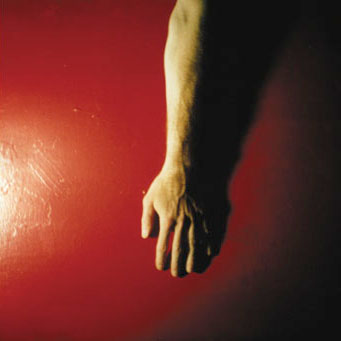 Just when you think you can predict Low, they toss a curve ball in your direction which ends up coming back and hitting you smack on the noggin' and knocks you out. Without a doubt, Low has recorded their creepiest, most diverse, most intense, and least hit-song-friendly record to date. Once again, I am completely floored.
Just when you think you can predict Low, they toss a curve ball in your direction which ends up coming back and hitting you smack on the noggin' and knocks you out. Without a doubt, Low has recorded their creepiest, most diverse, most intense, and least hit-song-friendly record to date. Once again, I am completely floored.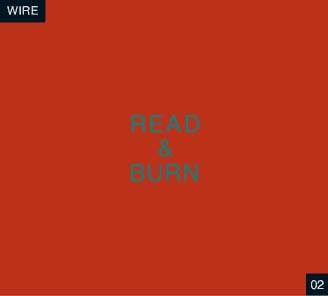 I never thought that #1) I would ever see Wire live or #2) I would be sitting here reviewing new material from the quartet. The method behind the 'Read and Burn' series is to record something and release it to the fans quickly, without loads of promotion and other time-consuming hassles that come along with full-length albums for record company machines. With this approach, the band feels that all fans have access to the recordings while the fence-sitters can just get a full-length recording when it comes out. Take this warning: volume two in this series is out now and will -not- be distributed to stores at all. Instead, due to the success of the first volume, the group is selling it direct from the web and at their shows. Wire reintroduced themselves to the world with their "greatest hits" shows two years ago. The band discovered that it was amazing to be playing together and a "hits" tour wasn't something they wanted to get in the business of doing. 'Read and Burn 01' saw the band tossing a very tasty treat to the bands: six short and fiery songs totalling about 16 minutes, heavy on the guitar and feverishly energetic. On volume two, the band has expanded the sound to include more electronic pieces, like the disc's jaw-dropping closer (their most recent concert-opener), "99.9," and "Nice Streets Above" which could easily please any fan of the 'Bell is a Cup' album. Fans of the first volume will be pleased with the rough and fast tunes "Trash/Treasure" and the song simply titled, "Read and Burn," where the bark-like lyrics take a back seat to a rawkus progression only a band like Wire could pull off. Over two decades after their inception, it's amazing to think that this band is still as fresh, original and true to a sound which has become all their own. I can't wait for the next one in the series.
I never thought that #1) I would ever see Wire live or #2) I would be sitting here reviewing new material from the quartet. The method behind the 'Read and Burn' series is to record something and release it to the fans quickly, without loads of promotion and other time-consuming hassles that come along with full-length albums for record company machines. With this approach, the band feels that all fans have access to the recordings while the fence-sitters can just get a full-length recording when it comes out. Take this warning: volume two in this series is out now and will -not- be distributed to stores at all. Instead, due to the success of the first volume, the group is selling it direct from the web and at their shows. Wire reintroduced themselves to the world with their "greatest hits" shows two years ago. The band discovered that it was amazing to be playing together and a "hits" tour wasn't something they wanted to get in the business of doing. 'Read and Burn 01' saw the band tossing a very tasty treat to the bands: six short and fiery songs totalling about 16 minutes, heavy on the guitar and feverishly energetic. On volume two, the band has expanded the sound to include more electronic pieces, like the disc's jaw-dropping closer (their most recent concert-opener), "99.9," and "Nice Streets Above" which could easily please any fan of the 'Bell is a Cup' album. Fans of the first volume will be pleased with the rough and fast tunes "Trash/Treasure" and the song simply titled, "Read and Burn," where the bark-like lyrics take a back seat to a rawkus progression only a band like Wire could pull off. Over two decades after their inception, it's amazing to think that this band is still as fresh, original and true to a sound which has become all their own. I can't wait for the next one in the series.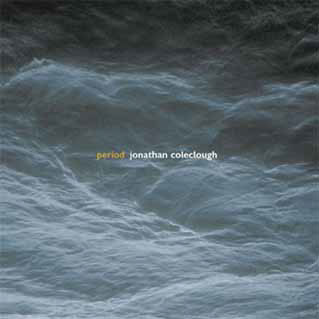 Originally released on vinyl last year, Anomalous has recently issued an expanded CD version of this magnificent piano-derived piece. The first track, "Period," opens with some plaintive piano notes over the expected low-frequency drone. What is surprising in this piece is the piano—it's up-front rather than altered and hidden like the sounds used in his other pieces. The sound is full and lush, and as each sparse, melodically abstract phrase is played on the piano. Some of the notes are significantly extended, slowly decaying and interacting with the music as some stunning textures emerge.
Originally released on vinyl last year, Anomalous has recently issued an expanded CD version of this magnificent piano-derived piece. The first track, "Period," opens with some plaintive piano notes over the expected low-frequency drone. What is surprising in this piece is the piano—it's up-front rather than altered and hidden like the sounds used in his other pieces. The sound is full and lush, and as each sparse, melodically abstract phrase is played on the piano. Some of the notes are significantly extended, slowly decaying and interacting with the music as some stunning textures emerge.
